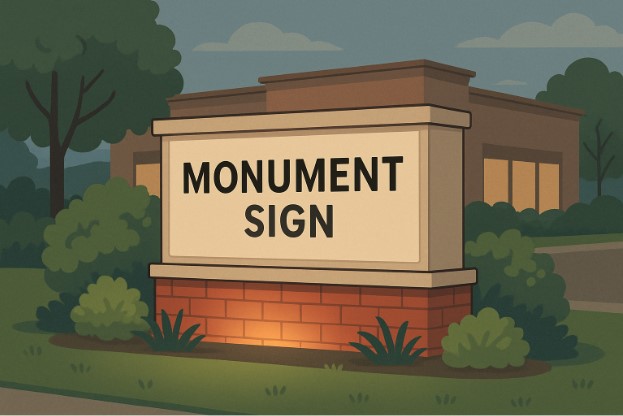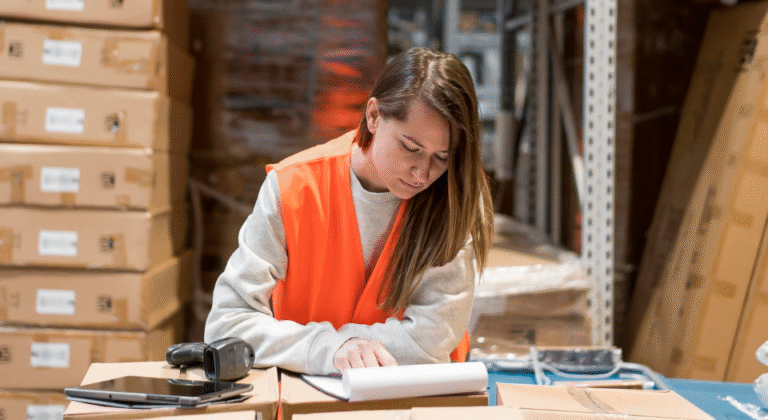
Key Takeaways
- Prioritize readability and clear visibility for maximum impact.
- Select durable materials that are suited to the local climate and your design vision.
- Integrate lighting or digital features for around-the-clock engagement.
- Ensure your sign coordinates with its surroundings for a cohesive effect.
- Opt for sustainable materials and energy-efficient solutions when possible.
Table of Contents
- Legibility and Visibility
- Material Selection
- Incorporating Lighting and Digital Elements
- Harmonizing with the Environment
- Sustainability and Eco-Friendly Practices
- Conclusion
Monument signs are not just markers, as they are critical branding tools that communicate presence, professionalism, and identity to anyone passing by. Whether for a business, school, or residential community, a thoughtfully crafted monument sign enhances visibility and reinforces trust. With several essential design principles in mind, your monument sign can become both a local landmark and a marketing asset. For those considering custom signage, exploring your options with a reputable monument sign Portland specialist can ensure the best results for your site and goals. The first impressions formed by a monument sign are long-lasting. High-impact monument signs combine strategic design with durable material choices, ensuring they can withstand Oregon’s weather while maintaining a visually appealing presence. Creating a monument sign that is both eye-catching and harmonious with its environment requires a balance of visibility, aesthetics, and innovation. Let’s explore the practical strategies behind creating a standout monument sign design and how you can ensure your project.
Legibility and Visibility
Monument signs should instantly grab attention and ensure people can digest the information without strain. That requires careful font, sizing, and color choices. Sans-serif fonts, known for their clarity and sharp lines, remain the gold standard for outdoor signage. Avoid fonts with excessive ornamentation, as they can distract and detract from readability, especially when viewed from a moving vehicle or at a distance. The physical size of your sign and the characters on it must be proportionate to its viewing distance. For optimal impact, every inch of letter height should equate to about 10 feet of viewer distance. Color also plays a pivotal role; choose strong contrasts (such as deep blues on white or bright white on charcoal) to make the text pop against the background.
Material Selection
The best monument signs strike a balance between enduring quality and visual character. Modern monument signs must withstand environmental factors, including scorching summers and rainy seasons. Materials like brushed aluminum, stone, high-density urethane, and treated wood are popular for good reason—they blend resilience and beauty. Stainless steel or powder-coated metals resist corrosion, while stone and brick lend an institutional gravitas to any property. Finishes matter as much as core materials. Matte surfaces typically reduce glare, making text more legible. At the same time, polished or glossy finishes can create a memorable, upscale impression—if positioned to avoid reflectivity issues that might impede readability during midday sun.
Incorporating Lighting and Digital Elements
Adding lighting or dynamic displays elevates monument signs from static markers to interactive platforms. LED-illuminated letters or panels ensure 24/7 visibility and can be customized to match your branding with a color temperature that suits your needs. Backlit elements project sophistication and clarity at night, as well as during fog or rain, which is common in the Pacific Northwest. Digital signage, such as electronic message centers (EMCs), allows you to update content in real-time—an advantage for the retail, education, and hospitality sectors. EMCs can display event details, promotions, or community news, making your monument sign as adaptable as your needs.
Harmonizing with the Environment
A well-integrated monument sign enriches its surroundings rather than dominating them. Analyze the architectural lines and color palettes of nearby buildings, and echo their primary tones and materials to achieve a seamless fit. A rural development might choose stacked natural stone for a rustic look, while a contemporary business park could opt for geometric shapes in brushed metal or glass. Blending with landscaping and streetscapes goes beyond mere aesthetics. It also enhances the way visitors find and engage with your property, reinforcing your community presence in subtle but powerful ways. Blending visual harmony with unique branding elements ensures your sign draws positive attention without clashing with its context.
Sustainability and Eco-Friendly Practices
Environmentally responsible sign design is increasingly important for both businesses and communities. Employing sustainable materials, such as responsibly sourced wood, bamboo, or recycled metals, helps mitigate long-term ecological impact. Utilizing low-wattage LEDs, solar-powered lighting, or other environmentally friendly technologies further demonstrates a commitment to sustainability. Not only does sustainable design reduce operational costs, but it resonates with eco-conscious consumers and local authorities alike. When planning your monument sign, consider inquiring about the use of recycled content, renewable energy, and end-of-life recyclability to maximize its positive impact.
Conclusion
A standout monument sign reflects careful planning, attention to communication essentials, and thoughtful integration of materials and technology. From the font choices that guarantee legibility to the digital and eco-friendly features that future-proof your investment, every detail matters. By following these insights—balancing visibility, resilience, environmental integration, and sustainability- you ensure that your monument sign not only elevates your brand but also enhances the public landscape.





